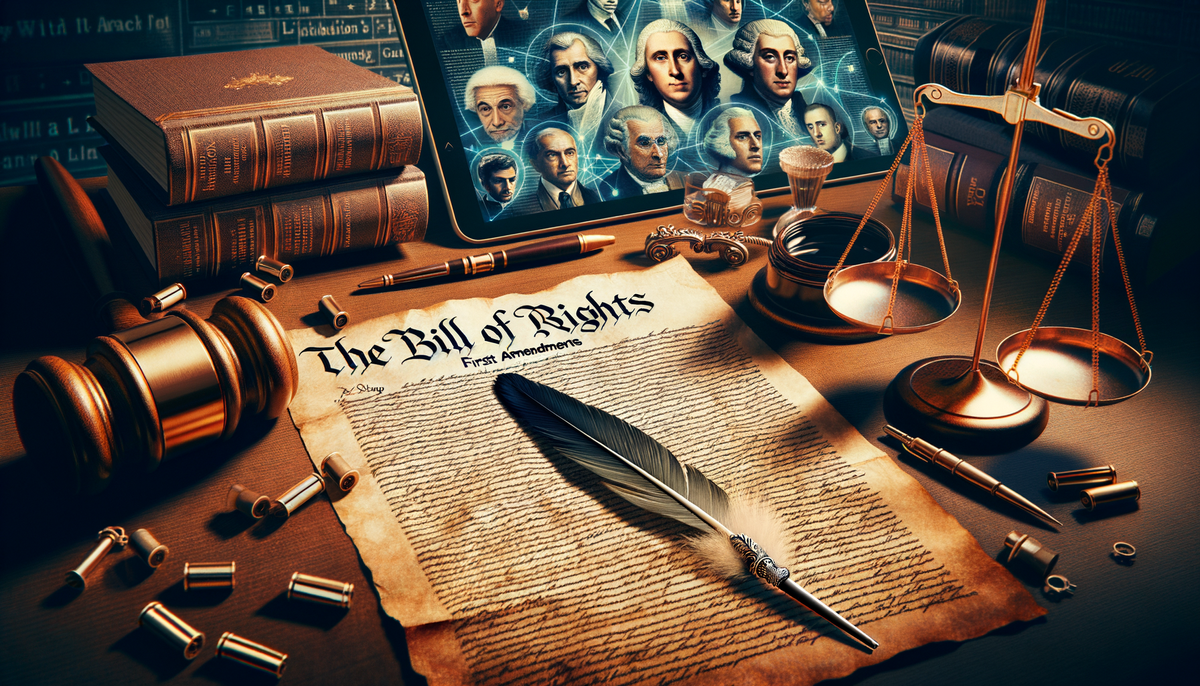The Bill of Rights: Exploring Fundamental Liberties and Current Challenges
Explore the enduring significance of the Bill of Rights and its influence on contemporary legal challenges with Newsomix.com.

The Bill of Rights: Exploring Fundamental Liberties and Current Challenges
The Bill of Rights, a cornerstone of American democracy, continues to be a subject of significant interest and debate. As the first ten amendments to the United States Constitution, these articles articulate fundamental rights and liberties, setting explicit limitations on governmental power. This week's exploration of the Bill of Rights highlights its enduring importance and the contemporary challenges it faces in various arenas.
Overview of the Bill of Rights
Drafted by James Madison and ratified in 1791, the Bill of Rights was introduced to address the concerns of state conventions and individuals who feared that the original Constitution did not sufficiently protect personal liberties. [Sources: Seattle Times, 9News, The Center Square]
Historical Context
The drafting and ratification of the Bill of Rights were driven by intense debates surrounding the 1787–88 Constitutional ratification process. Influences on the Bill include the Virginia Declaration of Rights and the English Bill of Rights, among others. Its introduction was a critical step in securing the support of Anti-Federalists who were vocal about needing explicit guarantees of individual freedoms.
Purpose and Importance
The Bill of Rights guarantees civil rights and liberties, such as freedoms of speech, press, religion, assembly, and petition. These amendments also dictate legal protections in matters of search and seizure, trial by jury, and protection against self-incrimination. It is a defining document that limits government authority, ensuring a separation between state powers and individual freedoms, and underscores the federal nature of the United States' governance system by emphasizing states' rights under the Tenth Amendment.
Key Provisions in the Bill of Rights
| Amendment | Main Subject | Description |
|---|---|---|
| First | Freedom of Speech, Press, Religion, Assembly, Petition | Guarantees freedom to express ideas, assemble peacefully, and practice religion. |
| Second | Right to Bear Arms | Protects the right to keep and bear arms. |
| Third | Quartering of Soldiers | Prohibits the forced housing of soldiers in private homes. |
| Fourth | Search and Seizure | Protects against unreasonable searches and seizures of property. |
| Fifth–Eighth | Criminal Justice Protections | Ensures due process, protection against self-incrimination, double jeopardy, and fair trial rights, alongside protection from cruel and unusual punishment. |
| Ninth | Unenumerated Rights | Ensures that rights not specifically listed are retained by the people. |
| Tenth | States' Rights | Asserts that powers not given to the federal government belong to states or the people. |
Contemporary Challenges and Developments
In recent times, the application and interpretation of the Bill of Rights continue to generate discussions and debates. Whether it is addressing individual rights in emerging contexts or assessing governmental action, the principles enshrined in these ten amendments remain highly relevant. For instance, the "Stripper’s Bill of Rights," as discussed in the Seattle Times, reveals the modern dynamics of civil rights in specific professions, highlighting gaps that exist between established legal rights and real-world implementation. Meanwhile, political movements and legislative developments across states, as reported by 9News and The Center Square, showcase the ongoing evolution and challenges faced by the Bill of Rights in contemporary politics.
Legacy and Global Influence
Internationally, the Bill of Rights has inspired numerous human rights documents, influencing democratic governance structures around the world. Its foundational principles of liberty and justice continue to underpin legal and cultural discussions both within and beyond the shores of the United States.
Practical Takeaways for Professionals in the Field
- Understanding the historical context of each amendment can provide valuable insights into current legal interpretations and advocacy work.
- Professionals engaged in legal, policy-making, or educational fields should keep abreast of Supreme Court decisions that involve key amendments to anticipate changes in legal precedents.
- Analyzing modern applications of the amendments can aid in developing legislative strategies that uphold these foundational rights while adapting to new societal needs.
Exploring Our Expertise
At Newsomix.com, we specialize in delivering incisive analyses and updates on constitutional law and rights. Our experts are dedicated to unpacking complex topics to empower business leaders and professionals with the information they need to navigate today’s rapidly changing legal landscape.
Call to Action
We invite you to delve deeper into the remarkable journey of the Bill of Rights. Explore our resources, subscribe for regular updates, and join us in meaningful discussions that continue to shape the future of individual liberties and governance. Visit us at Newsomix.com to learn more about our services and how we can assist you in understanding the intricacies of constitutional rights.




